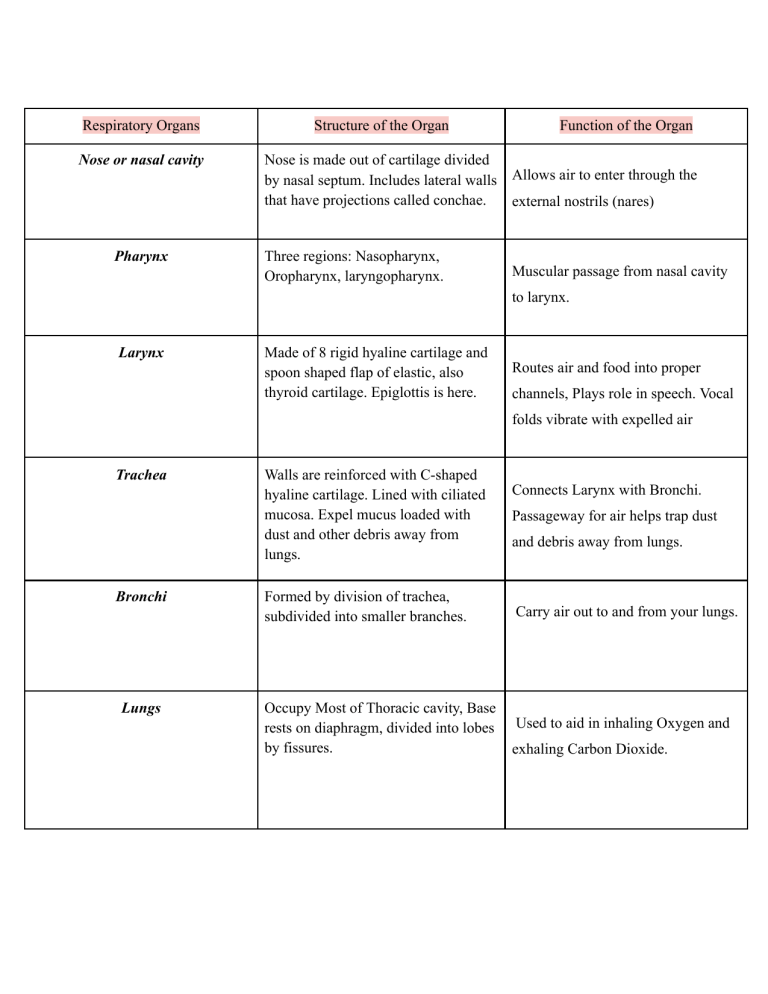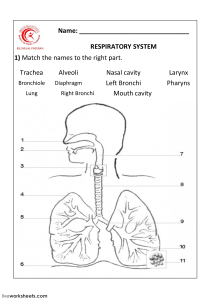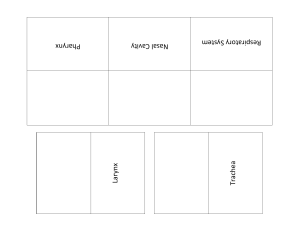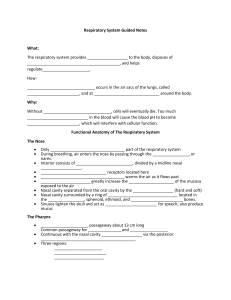
Respiratory Organs Nose or nasal cavity Pharynx Structure of the Organ Function of the Organ Nose is made out of cartilage divided by nasal septum. Includes lateral walls Allows air to enter through the that have projections called conchae. external nostrils (nares) Three regions: Nasopharynx, Oropharynx, laryngopharynx. Muscular passage from nasal cavity to larynx. Larynx Made of 8 rigid hyaline cartilage and spoon shaped flap of elastic, also thyroid cartilage. Epiglottis is here. Routes air and food into proper channels, Plays role in speech. Vocal folds vibrate with expelled air Trachea Walls are reinforced with C-shaped hyaline cartilage. Lined with ciliated mucosa. Expel mucus loaded with dust and other debris away from lungs. Connects Larynx with Bronchi. Passageway for air helps trap dust and debris away from lungs. Bronchi Formed by division of trachea, subdivided into smaller branches. Carry air out to and from your lungs. Lungs Occupy Most of Thoracic cavity, Base rests on diaphragm, divided into lobes by fissures. Used to aid in inhaling Oxygen and exhaling Carbon Dioxide. Alveoli Microscopic balloon shape located at the end of the respiratory tree. Used to exchange oxygen with blood and lungs during exhalation and inhalation.







